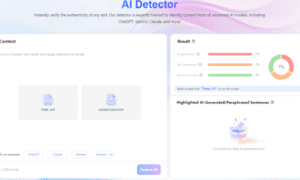Kamino Finance has launched the first concentrated liquidity optimization protocol on Solana. The addition of Kamino to Solana’s concentrated liquidity decentralized exchanges (DEXs) vastly improves the depth of liquidity on the network and makes it easy for users to supply their tokens and earn yield.
The combination of easy yield for liquidity providers (LPs) and the ability to concentrate liquidity around a specific price point in an automated and decentralized manner is a step function improvement for the trading environment on Solana.
With the addition of Kamino’s automated vaults to Solana’s concentrated liquidity DEXs, one of the world’s fastest and most cost-efficient blockchains may see a huge increase in volume for decentralized trade.
Why Concentrated Liquidity Needs Automated Management
The introduction of constant liquidity market makers (CLMMs) was a revolutionary advancement in the technology that powers DEXs from the backend. By replacing the inefficient automated market maker (AMM) with CLMMs, decentralized finance (DeFi) hit a new high for capital efficiency.
On the other hand, the CLMM’s increased efficiency has come at the cost of poor user experience and some loss of capital for LPs. In the past, LPs could deposit their tokens on a traditional AMM and let the system take care of rebalancing their position, but CLMMs now require users to rebalance positions themselves.
In addition to requiring ongoing management, CLMMs also increase the risk of impermanent loss (IL), since any position that falls out of range will incur 100% IL into either token. As a result, LPs do not earn fees, and their position remains stuck until they withdraw their tokens, swap them into correct proportions, and rebalance the position around the current token price.
The technology that facilitates concentrated liquidity can create deep liquidity for tokens with minimal supply; however, if liquidity positions are set out of range, then liquidity cannot be provided for traders.
Furthermore, depending on users to maintain their positions has proven inefficient. So an automated way to manage liquidity on behalf of users has become a necessity for CLMMs to make a difference.
How Automated Concentrated Liquidity Incentivizes Users to Participate and Earn Real Yield
DeFi provides users with myriad ways to generate yield. Some of this yield comes from projects that reward users with tokens for using their service, but much of the DeFi community has begun shying away from this mode of accruing yield, since rewards tokens often decrease in price as they are sold off to capture value.
The yield that comes from supplying liquidity is an entirely different situation. LPs earn yield in the form of the same tokens they provide as liquidity. This real yield is generated from users’ fees paid to swap their tokens through a DEX, using an LPs tokens to facilitate the trade.
In the past, an AMM would automatically supply an LP’s tokens at a price range from zero to infinity, which meant that LPs had little chance to capture fees. The CLMM lets users supply their tokens within the price range around current market values, exposing LPs’ tokens to increased market activity.
Automated concentrated liquidity positions help ensure an LP’s tokens are supplied within an optimal range for capturing the most fees. Kamino’s vault strategies for setting optimal ranges are designed using advanced quantitative modeling to target improved outcomes for users, capturing more fees than users can acquire on their own.
Concentrating and Compounding Liquidity Benefits Liquidity Providers and Traders
There are several ways to multiply APY through elective processes like staking, bonding, or vote locking. Then, there are mechanical approaches to optimizing yield, like auto-compounding and vault strategies, that do a lot of work behind the scenes for users who “set it and forget it” after making their deposits.
The next generation of CLMM yield optimization strategies falls into the latter category, using improvements in technology and automation to enhance the APY that can be earned from real economic activity and fees. This system could be called the next generation of yield aggregation services built on the next generation of liquidity-providing services.
By this definition, Kamino is a yield aggregator that simultaneously compounds yields and chases them down. Instead of jumping from yield strategy to yield strategy, like a Yearn vault, Kamino chases the price of an asset traded on a concentrated liquidity DEX.
Kamino auto-compounds fees and rewards back into CLMM positions, so the position holds more tokens over time. Compounding benefits LPs, as they can earn more fees for more liquidity provided. This also benefits traders who can swap their tokens with maximum capital efficiency and minimal price slippage.
A Renaissance for Capital Efficient Decentralized Trading?
The effects of compound interest are something of a miracle. Einstein called compound interest the greatest invention of mankind, and now a similar mechanism for compounding and concentrating funds has been applied to the DEX.
Combining economic insights through quantitative modeling and advanced engineering through automation creates opportunities for incredibly deep liquidity pools on Solana DEXs.
All these pools need are users to supply liquidity to this optimized system.
The combination that fosters deep liquidity on a DEX appears can also incentivize users to provide liquidity for economic gains. The acceleration of this interdependent cycle could make trades executed on the blockchain more capital efficient and in demand than ever.



































